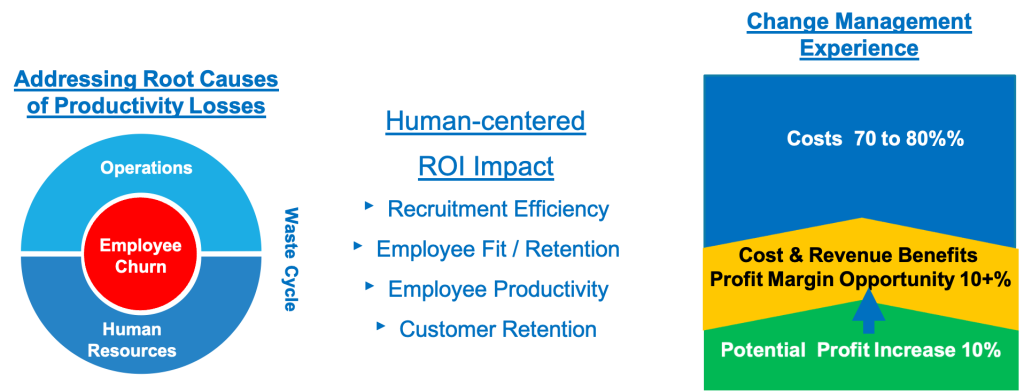Rethinking productivity measurement
Human performance and relationships are critical to create revenue and profit stability and growth potential. Traditionally, human performance is measured downstream based on output measures, including hours worked, tasks completed, and calls made — and at an organizational level, it’s often based on revenue per employee.
Yet the Internet, advanced communications, and modern learning technologies directly linked to decision-making tools have created powerful new sources of Return on Investment to empower human performance upstream at the point of decision-making and personal interactions.
If this is possible, why then are so many workforce losses accepted and even benchmarked based on historical or industry comparisons? The reasons are multiple and include throwaways statements like “people are different” or “people today are free agents and don’t stay long,” and more universally, a recurring and unhelpful belief that productivity has been developed top-down from the organizational perspective, not bottom-up from a human perspective.
Our goal with Reflective Performance is to enable people to be at their best in all that they do.

Creating change at the human source
Seizing this ROI opportunity requires two fundamental changes for organizations: (1) a focus on people as people first, and on their human performance and (2) a system-level (as opposed to point-to-point) measurement and analysis. Reflective Performance’s executive function assessment and skills development tools, programs, and data provide the previously missing driver for this upstream solution through three frameworks:
Such essential change management is possible by taking an integrated approach to workforce management. This requires a reorientation to do whatever it takes to enable people to be even more engaged and productive — a result that naturally roots out waste to support a stable, high-performing organization.
A human-centered solution to optimize productivity and sustain high profitability.